
Epsilon 13 includes these operating system versions:
|
Epsilon now supports Mac OS X. It can
run in either Terminal or X11 mode, dynamically selecting the best
available mode. Epsilon for Mac OS X is distributed as an application
bundle that supports drag-and-drop installation. (Click on any screen shot to see a full-size version.)
|
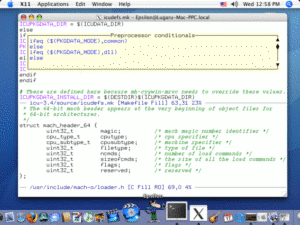
|
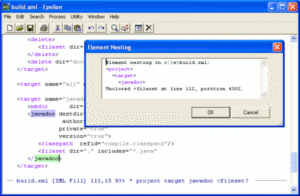
|
Modes for XML and
HTML have been extensively enhanced. They now support smart
indenting and embedded CSS and Python scripting. And they
automatically highlight matching and mismatched tags. There are new
commands to move by tags or elements, delete matched tags, insert an
end tag to close the current element, list unmatched tags, and sort
and align XML attributes.
|
| Epsilon can now display misspelled words as you edit. In programming language modes, it marks only words in comments and strings. (Modes can easily customize this.) Epsilon also offers suggestions for correcting these misspellings, either using its own guessing algorithm or one of several external programs. It maintains per-file, per-directory, and global ignore lists. A traditional spell-buffer-or-region command and a spell-grep command to list all misspelled words are also available. |
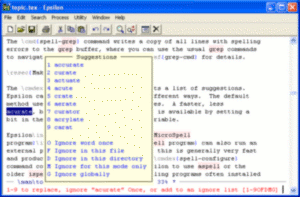
|
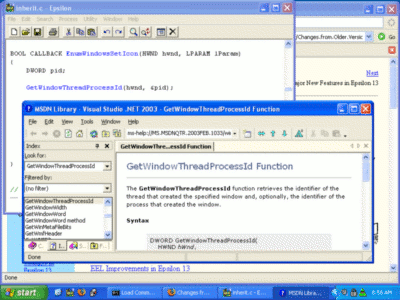
|
A new context-sensitive
help feature provides help on language keywords using flexible
mode-based rules. It includes built-in rules for C, C++, Perl, PHP,
Python, Java, HTML, JavaScript, VBScript, XML, Visual Basic, LaTeX,
Shell scripts, VHDL, Tcl, and EEL, and you can customize them by
simply setting a variable. Rules can offer help by conducting a web
search, accessing Windows-based help in various formats, displaying
Info documentation, and other methods.
|
|
A new browse-symbol
command provides an enhanced interface to the source code browser
database generated by Microsoft compilers. Epsilon can display the
names of all functions that read or write a certain variable or call a
particular function, and show the actual lines that do so, letting you
quickly navigate to one. Results can be filtered in various ways.
You can now use Epsilon's native tagging facility side by side with a
browser database.
|
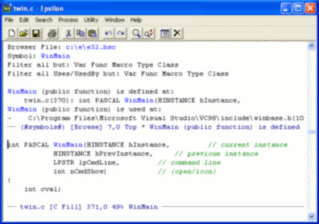
|
1 mimics Epsilon's previous behavior of only
using the primary selection. Middle-clicking, which normally performs
pan-style scrolling, now inserts the primary selection when
shift-clicked.

** can now be set to skip directories whose
names match a pattern. Under Windows, you can restrict completion and
other matching on UNC file
names to particular domains.
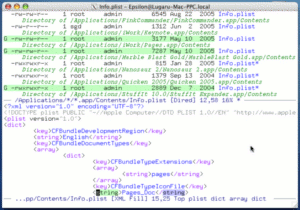
|
|
[ and Alt-] to
move to the next or previous searches.)
#S
code in replacement text can be used to more easily swap words in
a list of alternatives.
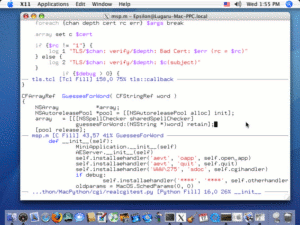
#include statement for the
current file onto the clipboard; for other languages it uses the
appropriate syntax for including files. Several new mode-specific
variables provide specialized rules for their modes.
#if 0 blocks, and the new tag-c-preprocessor-skip-pat
variable lets you customize it to skip other #if blocks
too.
%l and %c.
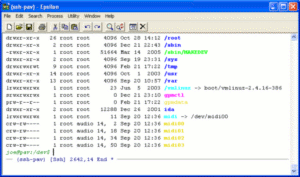
ssh-coloring-rules (replaced in version 13.07 by ssh-interpret-output) all
have new bits defined, and new default settings.
> or # to indicate quoting. The
mail-fill-paragraph command on
Ctrl-C Alt-Q fills such paragraphs, and Ctrl-C > (the mail-quote-region) and Ctrl-C <
mail-unquote remove it.
set-variable
and change-name
commands. You can now run a command and send it a numeric prefix
argument. For all names of commands and variables, quotes are now
optional. The new do-execute-eel
subroutine can be used from a command file to execute arbitrary code
without a separate EEL file.
#diff#, unless you use a numeric prefix argument to make
them prompt.
; followed by a printf-style format specification. For
instance, evaluate 123+456;x to show the result of that
calculation in hexadecimal, or 0x03B5;k to insert the
name of Unicode character U+03B5 (using Ctrl-U before the eval to make
it insert the result).
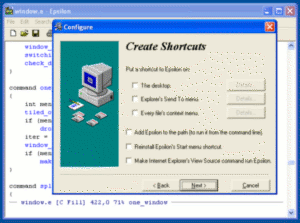
epsilon -add filename" where
filename is a Cygwin-style pathname.
terminal-epsilon executable
is included; this runs Epsilon in console mode only, and does not
depend on X11 shared libraries being installed.
There are also many other minor improvements throughout the editor. Place your update order now.
Last Updated: 20 October 2020